As a student of Mormon literature, I have a keen interest in Mormon literature-y things—comparable religious (and other) subcultural literatures whose study in the academy can help me to frame the study of literature as it relates to my own culture. In graduate school, for example, I took several courses on Jewish literature and developed a minor sub-specialty in the work of Saul Bellow. When I was an English professor in West Virginia, I worked every year with an Appalachian writers program that we sponsored. There are a lot of good comparable out there.
Over the last few months, though, I have become convinced that the closest parallel that we have to Mormon literature today is the burgeoning field of Muslim literature written in English and coming from the United States, Canada, and the United Kingdom. There are several reasons for this.
Islam and Mormonism have remarkably similar origin stories. Both were founded by a prophet who produced a new book of scripture that complemented, but also radically reframed, the Hebrew and Christian Bibles. Both religions grew quickly, first through elaborate kinship networks, and then through aggressive proselyting. And both religious communities initially had issues with their closest neighbors.
In the 21st century, the Mormon and Muslim experiences align in different ways. In the United States, they represent about the same percent of the population (1-2%). They are both communities that emphasize education and professional accomplishment, but that also stand apart from the larger society through distinctive sartorial and dietary conventions and through their adherence to beliefs and practices that most people don’t understand. Muslims and Mormons score similarly (and similarly negative) in public perception polls, which show that neither religious community has quite assimilated into the American mainstream.
And then there is the fact that many American politicians, and far too many of their followers, are currently making horrible generalizations about Islam that sound almost exactly like the horrible generalizations that people made about the Mormons less than a hundred years ago.
In other words, if contemporary American Mormons don’t feel a strong kinship with contemporary American Muslims, then we are just not paying attention.
As it happens, one good way to deepen our understanding of an appreciation for other people is to read literature. I believe this as much as believe anything. It is the organizing principle of my life. And as it happens, English speaking Muslims are going through their literary Golden Age even as we speak—something not unlike what Mormon literature went through between 1935 and 1960. So much has been written in the last few years that it would not be possible to even introduce the basics in a short space like this. But here are five books that have added tremendously to my understanding of Islam that I would like to recommend to all serious students of the human family. (Links to full reviews in text):
The Butterfly Mosque, by G. Willow Wilson (2010). I first encountered G. Willow Wilson, who primarily writes graphic novels and comic books, through her wonderful urban fantasy novel, Alif, the Unseen, which is also a great read. The Butterfly Mosque is a great read too, and a really important one. G. Willow Wilson is an American writer who was raised in a progressive, secular, not-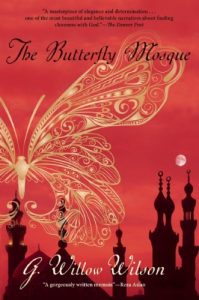 at-all Muslim family in Colorado. As a student at Boston University, she felt an absence in her life and began to search for a religion and chose Islam, not from any family or cultural connections but because she studied it academically and found it irresistible.
at-all Muslim family in Colorado. As a student at Boston University, she felt an absence in her life and began to search for a religion and chose Islam, not from any family or cultural connections but because she studied it academically and found it irresistible.
The Butterfly Mosque tells the story of how a progressive, intelligent young woman who was a religious free agent chose to convert to Islam because she felt that she needed a bigger God than the Christian world offered. It shows how her religious choices proceeded from her beliefs in feminism and social justice and did not require her to give them up. She travels to Egypt, meets and falls in love with a progressive Muslim man, and creates a life around her new religion that is challenging, frustrating, and difficult–but also beautiful and meaningful. If you don’t understand how a progressive Western woman could convert to Islam, adopt the hijab, pray five times a day, and still have a fulfilling life and an amazing career (she currently writes the Ms. Marvel comic for Marvel), then you need to read this book.
Minaret, by Leila Aboulela (2005). Leila Aboulela is a Sudanese writer who lives in the UK (Aberdeen), and Minaret is a novel about a Sudanese woman who moves to the UK (London), but it is not a memoir or an autobiography. It is, though, an important novel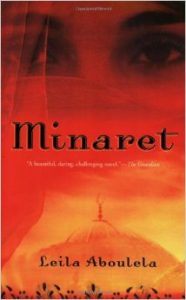 for those who want to explore religious experience in a diaspora. The heroine of the novel is Najwa, who grows up in Khartoum, the capital of Sudan. She is the daughter if a very wealthy political leader in a secular and thoroughly Westernized family and peer group. She is officially Muslim, but this plays no role in her day-to-day life.
for those who want to explore religious experience in a diaspora. The heroine of the novel is Najwa, who grows up in Khartoum, the capital of Sudan. She is the daughter if a very wealthy political leader in a secular and thoroughly Westernized family and peer group. She is officially Muslim, but this plays no role in her day-to-day life.
When the government falls to a military coup, however, Najawa’s father is executed, and she becomes a political exile in London. In the process of rebuilding her life, she draws closer and closer to her faith, largely through the exile community that helps her family. She adopts the hijab, becomes a regular feature at the mosque, and works as a servant to a wealthy Muslim family. In much the same way that The Butterfly Mosque shows the power of Islam as a set of religious ideas, Minaret shows its power as the foundation of a nurturing religious community–something that should immediately resonate with Latter-day Saints who live outside of the Mormon cultural region in the Western United States.
The Language of Secrets, by Asuma Zehanat Khan (2016). The Language of Secrets is the second installment in the police procedural series featuring Rachel Getty and Esa Khattak, partners in Toronto’s newly created Division of Community Policing. Rachel 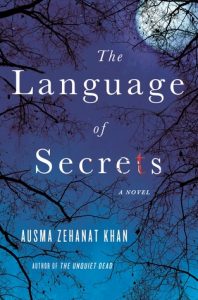 is a second-generation career police officer, and Esa is a distinguished longtime officer, the head of the Community Policing Division, and a Muslim. The first book in the series, The Unquiet Dead, is extremely good. The second one delves much more deeply into Khattak’s conflicts as a Muslim-Canadian trying to reconcile his religious loyalties with his civic duties.
is a second-generation career police officer, and Esa is a distinguished longtime officer, the head of the Community Policing Division, and a Muslim. The first book in the series, The Unquiet Dead, is extremely good. The second one delves much more deeply into Khattak’s conflicts as a Muslim-Canadian trying to reconcile his religious loyalties with his civic duties.
The event that drives the plot is an impending terrorist attack by a cell of Cell of Canadian Muslims who are headquartered at a local mosque–a community that reaches out to touch Khattak’s own family. Khan does a good job showing how apparently Westernized Muslims get swept into the orbit of fundamentalist leaders. These reasons vary widely and include a genuine belief in Islamist ideas, the influence of a powerful charismatic authority figure, the desire to fit in with a peer group, and the need to feel important within a community. She also depicts Muslim characters who love their religion, honor their country, and vigorously oppose terrorism or violence in any form. Khan’s mystery novels (Book 3 is due out tomorrow) do for Western Muslim’s what the recent mystery series by Mette Harrison and Andrew Hunt do for Mormons: they paint a more complex and nuanced portrait of a faith that most people still don’t really understand.
The Hakawati, by Rabih Alameddine (2008). Rabih Alameddine is one of the best American writers I know of from a Muslim background. The “Muslim background” part is contestable–he was raised in a Druze family in Lebanon and now lives in San Francisco and describes himself as an atheist. But the really important writers in a community often come from its furthest boundaries, and 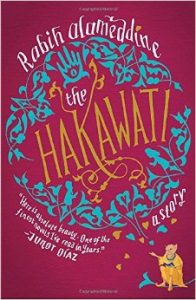 there is very little controversy over Alameddine’s status as a really writer. His 2014 book An Unnecessary Woman was a National Book Award finalist and one of the best works of recent fiction I have read in the last few years. That book, however, deals only tangentially with Islam. Not so for The Hakawati.
there is very little controversy over Alameddine’s status as a really writer. His 2014 book An Unnecessary Woman was a National Book Award finalist and one of the best works of recent fiction I have read in the last few years. That book, however, deals only tangentially with Islam. Not so for The Hakawati.
A Hakawati is an Arab storyteller. For centuries they have populated cafes and public squares, telling stories over weeks and months to audiences who are held in rapt attention by their narrative skills. Like The Thousand and One Nights, to which it is often compared, The Hakawati employs a frame tale set in contemporary times: Osama al-Kharrat, a Lebanese-American from Los Angeles, returns to Beirut to be with his family during his father’s last day. There, he reminisces about his life with his grandfather, a traditional Arab Hakawati, whose stories begin to fill the novel. Alameddine moves in and out of this frame to tell the stories of the Arab nations: stories from the Quran about Abraham and Ishmael, stories of the great military leaders, and stories of beautiful women and djinn and spectacular journeys. More than any other contemporary novel I know of, The Hakawati shows us the power and beauty of the Arab storytelling tradition–and the burden that two millennia of stories imposes on a modern culture trying to negotiate a complex world.
The Reluctant Fundamentalist, by Moshin Hamid (2007). But what about terrorism? What about the fact that there are some Muslims in the world–even some who have lived in the West and enjoyed all of the good things that liberal democracy has to 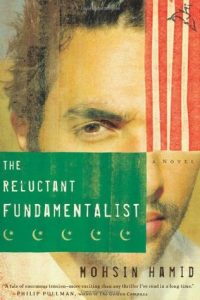 offer–embrace a fundamentalist ideology and set themselves in direct, and often violent opposition to Western ideals? This is the key question in Hamid’s The Reluctant Fundamentalist. The answers are stark.
offer–embrace a fundamentalist ideology and set themselves in direct, and often violent opposition to Western ideals? This is the key question in Hamid’s The Reluctant Fundamentalist. The answers are stark.
The whole book consists of a single dramatic monologue by Changez, an anti-American professor, and an unnamed American auditor, in a cafe in Lahore. Changez tells his own story: he was a thoroughly secular Pakistani student at Princeton. He landed a good job after graduation and had a solid career. He dated a wealthy American socialite and seemed to be the poster child for assimilation. And then the 9-11 bombings happened. American society changed, and he found himself increasingly forced to choose between being a Pakistani and being an American. Although he never formally embraces Islam, he does embrace Islamic fundamentalism–not because it appeals to him religiously, but because it is the only form that his nationalism can take in a post-9-11 world. It is an uncomfortable message, but one that Americans really need to hear.

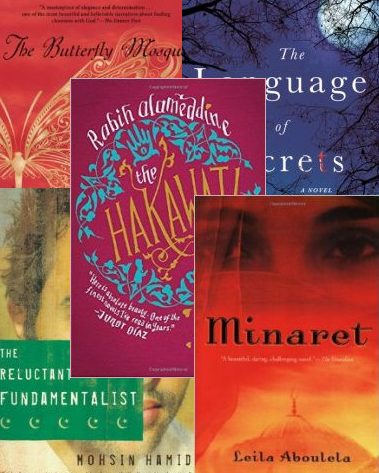
.
I’ve read the first six collections of Willow’s Ms Marvel and, frankly, they’re what I want superhero comics to be. Kamala Khan is a thoroughly grounded character–largely because of her communities. Her family, her faith, her friends, etc. I’ve been looking at her novels and trying to decide which one to read first.
Thanks for sharing these. I wonder if just as many Muslims would be offended at the comparison to Mormons as vice versa?
I also wonder if Muslims have the same problems that Mormons seem to have as a community in embracing serious literature about ourselves. How have Muslim-American writers been viewed by their community?
Thanks, Michael. I’m hard at work on a review of Mormon Feminism: Essential Writings, which includes a contrast between the editors’ definition of feminist and another definition. I saw this post while rereading a couple of sentence I had written about who the second definition excludes, “Not only could Mormon women not be feminists (or Mormon men) but–at least by western stereotypes of Islam–neither could Muslim women (or Muslim men). Many women (and men) in both groups would protest their exclusion, and rightly so.” Common sense tells me that’s true, and now I can link to your review of The Butterfly Mosque, and this column as examples.
About a mile south of us, on State St in Lindon, Utah is a little restaurant called Galilee, where my wife and son took me last year for the day before Father’s Day (or my birthday, which was a week later) “Do not walk in there singing, ‘I’m the number one fan of the man from Galilee,’ my wife said. I think I sang it softly. I liked the food a lot, Donna and Matthew not so much.
There was a sign on the door noting when orders for Ramadan meals should be placed so they could ready in time, and I noticed a novel for sale, a thriller, Days of the Messiah: Pharaoh by Ehab Abunawara, whose name I knew from Kimberly Jensen-Abunawara’s essay “Ehab’s Wife,” Dialogue 31:2. I had had a theater class with Kimberly Jensen, so the article caught my eye. (She or someone in the class told me she had been paid $10,000 for her small role in Footloose, enough to pay for college. I doubt $10,000 would go that far today. But IMDB has her name as Jenson, and no bio. Wouldn’t it be ironic if I’ve been thinking of the wrong Kimberly Jensen all these years?)
I found an article from Ehab as well, Nothing Holy.” When I got to the part, just now, about Gerald Lund’s One in Thine Hand I realized I read the essay when it first came out.
I don’t know how much his novel has to do with Islam, though. The setting is Arabic, but there are Arab Christians. He grew up in Nazareth as one, which makes him a neighbor to Lutheran pastor Mitri Raheb, whose Faith in the Face of Empire” I reviewed a few years ago, but it never got ported over here The book has a blog named in its honor, https://faithinthefaceofempire.org/blog/.
I looked up all the books you mentioned on Overdrive, and others have too, but none is in their collection. Nor did I find any on OneClickDigital, though I only looked for three there. Overdrive does have a recording of Salman Rushdie’s retelling of Scheherezade, Two Years, Eight Months and Twenty-Eight Nights, so I moved it up 100 place on my listening list and requested it next. If you’ve read it, how does it stack up next to The Hakawati?
I’m working on it.
Thanks, Moriah. I was wondering when I wrote that whether I need to send you a copy, whether it was one of the reviews lost in the disaster.
If you have it, please do send it. Salvaging all that is, indeed, a disaster.
Harlow, I just updated the post to link to my own review of The Hakawati, which had not been posted when I originally wrote this piece. In the review, I specifically compare it to the Rushdie book. Here is a paragraph:
“This is the third homage to 1001 Nights that I have read in the last year or so. The other two–Salman Rushdie’s Two Years Eight Months and Twenty-Eight Nights and Naguib Mahfouz’s Arabian Nights and Days were good, but The Hakawati is by far my favorite of the three, not just because it is about three times longer than the other two, though, for a book about the complexity of stories, the extra length actually helps a lot.”
FWIW, here is my review of the Rushdie book: https://www.goodreads.com/review/show/1485054090?book_show_action=false&from_review_page=1
And here is my review of yet another modern riff on 1001 Nights by Naguib Mahfouz
https://www.goodreads.com/review/show/21640141?book_show_action=false&from_review_page=1
Thanks, Michael. I have not been able to find recordings of The Butterfly Mosque, The Hakawati or Arabian Nights and Days on OneClickDigital or Overdrive, so I moved Two Years Eight Months and Twenty-Eight Nights up to the top of my list and am enjoying it a lot, though it only adds up to 1001 nights if you start the count on January 1st and neither of the three years in question is a leap year. If you start on March 1 and assume the 2nd or 3rd year is a leap year you get 1004 nights.
I was thinking about all the anecdotes Rushdie includes in the section on The Strangenesses, and it occurred to me there’s probably 1001 of them scattered throughout the book. I heard one last night about a building made of the shiniest pride that had me wondering whether Rushdie had been reading I Nephi 8 on the side.
I love Rushdie’s lists–especially the astonishing list of things falling out of the sky from the exploding airplane at the beginning of The Satanic Verses, which I didn’t have time to read more than the first couple of chapters of, so I was happy to find a recording on http://www.HumbleBundle.com a few years ago. I’m holding off reading it till I’ve done a little background reading. I was thinking of Reza Aslan’s No God but God, but The Butterfly Mosque might do just as well.
Have you heard of a novel about the Blue Qur’an? I saw it in the gift shop when BYU’s Museum of Art had that wonderful exhibit on Islamic art. I wrote it down in my notebook, but that one is full, so I don’t carry it with me. I asked the DuckDuck, and it found a lot of articles on the Blue Qur’an but no novels. I took my mother to the exhibit, and I think she enjoyed it, but she had just turned 93 and didn’t have a lot of mental or physical stamina, even in the comfort of a wheelchair.
I saw a copy of The Reluctant Fundamentalist in the Pleasant Grove library a few days ago, then heard the start of Tom Powers’ interview with Moshin Hamid on q, the CBC’s talk and culture show Wed Mar 22. Powers introduced the segment by talking about how popular The Reluctant Fundamentalist is. Hamid has a new novel called Exit West, about immigrants. He said we often think about immigrants as frozen in time, but they had a life before immigration and have lives after that he wants to explore. The immigrant journey was not the defining moment of their lives.
Reminds me of the way we think of Mormon pioneers frozen in time out in the wilds of Wyoming, and don’t pay much attention to their lives afterward. Years ago, when I reviewed Nelson Wadsworth’s book on early Utah photographers, Set in Stone, Fixed in Glass (part of Signature Books online library) I learned that Edward Martin had a life as a photographer after his company’s ill-fated handcart expedition.